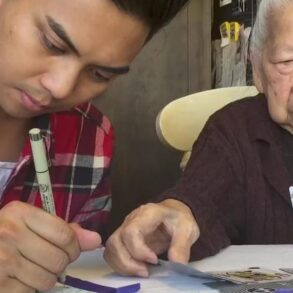 NEWS
NEWS
Jan. 18 2024, Published 4:39 a.m. ET
Art, Technology, Modernity
The intersection of the artistic world with technology has significantly reshaped creative expression. Social media, for example, democratizes art by introducing a new format of consumption (i.e. the iPhone screen) which breaks down traditional barriers of both accessibility and creation. Despite these positives, money flows where the eyeball goes, which has led to the prioritization trends, memes and attention-grabbing content over originality.
Similarly, the growing presence of AI introduces innovative tools that enhance creative possibilities, enabling artists to produce intricate works that challenge traditional methods. As with social media, these advancements bring challenges, including uniformity in artistic expression and raises questions about originality and the artist’s connection to their work. The impact of these technologies on artistic creation is mixed: while they offer new avenues for connection and innovation, technology in art can dilute the artist’s personal imprint, as AI tools used to create art may diminish the human element.
Article continues below advertisement
A seemingly positive trend is the emergence of technology that enables worldwide collaboration between artists, such as Slack, Splice, Soundtrap, JamKazam, Mural and Miro. These technological tools, with their capabilities for real-time editing, file sharing, and instant feedback, revolutionize collaborative art projects from anywhere in the world – gone are the days where artists needed to be in the same room to collaborate. They not only facilitate seamless integration of diverse artistic mediums but also foster a global community where artists can easily engage in cross-cultural and interdisciplinary collaborations. This democratization of artmaking broadens the artistic landscape, paving the way for innovative forms of creativity and expression that break traditional boundaries.
As the art world adapts to these changes, artists and audiences alike are navigating a terrain where the technological possibilities create constant flux in art production. In response, a burgeoning movement has arisen dedicated to preserving the essence of authentic art in these transformative times.
Andrew Masanto and Icon
With a background as a founder, entrepreneur, and investor, Andrew Masanto ventured into the realm of artistry after enrolling as a full-time student at ICON Collective, a music school in Burbank, California, in 2015. Masanto’s time at ICON Collective was marked by his engagement in collaborative projects, most notably the “Renegades” project, recognized as the best collaborative music project at the school for his year.
MORE ON:
NEWS
Article continues below advertisement
Andrew Masanto and ANONA
After graduating as one of the top students in his class, Masanto channeled his passion for collaborative art into pioneering the ANONA (Art-Non-Artist) movement. This movement, which began at the beginning of, and gained traction during, the COVID-19 pandemic, is founded on the principle of collaboration between artists and non-artists (those who want to contribute to art but are not masters of imagination) to promote the creation of unique and impactful art that addresses the challenges with modernity, technology and authenticity. As the artistic landscape changes in the near and long term, ANONA heralds a new era of authentic, inclusive and innovative artistry.
Past Work and Collaborations
During the pandemic, ANONA facilitated several collaborative projects. Notable works include the song and music video for “Not Enough,” which presented a critique of societal beauty standards. Similarly, “Melt,” a subjective, abstract and evocative dance piece focused on the complexities of abusive relationships. The movement also produced “Hammered”, another song with a corresponding music video that responded to the pandemic’s lockdown, engaging with themes of defiance and liberation. All works of art are independently created and expressed through the technological collaboration of artists contributing to the movement.
Philosophy and Impact
Masanto’s approach with ANONA stands as a counterpoint to the demands of trends, self-centric norms, corporate control and the ego-driven tendencies in the art world. Emphasizing collaboration and authenticity over individual recognition and industrial hegemony, ANONA aims to create art that resonates with the collective human experience. Masanto perceives himself not just as ANONA’s founder, but as a catalyst for artistic innovation and facilitator of creativity. Masanto enjoys placing greater emphasis on the cultural and emotional significance of his artistic endeavors, rather than his past successes in business and technological fields.
The fusion of art and technology, as epitomized by movements like ANONA, heralds an era of profound change in creative expression. While technology reshapes the creation and distribution of art, it also introduces challenges; fast-created, collaborative, social media centric art, can often overshadow originality, compelling artists to conform to popular content that garners attention rather than pursuing authentic creativity. This tension underscores the critical balance that artists must navigate: leveraging technology as a tool for both innovation and collaboration, while not diluting their unique inner voice in a landscape driven by new tools, likes and collaborative opinion.
Advertisement




